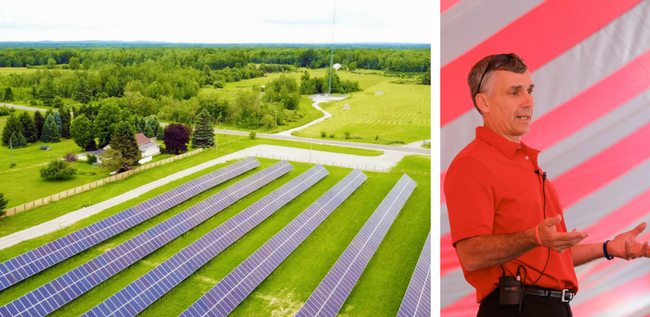By Tony Anderson
For close to a decade now, Michigan utilities have had a state-mandated energy conservation program. It started out as Energy Optimization or EO, and recently the name was changed to Energy Waste Reduction or EWR. This law requires every electric utility in the state to reduce the energy used by its members or customers in the present year by 1 percent of the previous year’s total energy sold.
In the beginning, Cherryland members were charged a $1-per-month line item fee to fund energy-saving measures like rebates, pipe wrap, CFL and LED bulbs, etc. Several years ago, we dropped this separate charge and simply rolled the annual $300,000 in expenses into our energy charge.
In the early years of the EO mandate, utilities quickly learned that low-income homes were a difficult place to make cost-effective, energy-saving gains. Eventually, the Michigan Public Service Commission lessened the low-income requirements, and utilities increasingly focused on the low hanging fruit of commercial and regular residential.
At your cooperative, we put a portion of our EWR funds into local weatherization efforts for low-income homes. We also lobbied state employees and elected officials for better programs to serve the low-income community. While the weatherization efforts were effective, our lobbying efforts over the years never were.
Finally, in the fall of 2017, we were presented with an opportunity by the Michigan Agency for Energy (MAE). They were looking for an electric cooperative to participate in a first-of-its-kind energy efficiency and community solar program targeted at low-income homes.
We matched 50 low-income cooperative homes that had gone through energy-saving upgrades in a Northwest Michigan Community Action Agency program with $80,000 from MAE and $100,000 from Cherryland.
The $180,000 from the state and your cooperative funded nine solar panels per household out of the Wolverine Power Cooperative community solar project near Cadillac, Michigan. Since March 1, 2018, these 50 cooperative members have been receiving a monthly credit for the solar production of their nine assigned panels.
What are the goals of this pilot project? There are a few. First, we will track energy use to see if it remains stable, declines or increases. Are the participants really trying to watch their energy use? Second, we will track the use of energy assistance in these homes. Are they becoming more self-sufficient which makes more assistance dollars available for others? Third, we will follow their disconnect history. Are they less costly to serve on a monthly basis?
Through clearly and easily measured metrics over a period of months and years, we will be able to determine whether or not the pilot accomplished its main goal of energy independence for low-income users of electricity.
I am excited about this program and proud of the Cherryland employees who are making it happen. We have always strived to be an energy leader locally, regionally and on a statewide level. Filling an unmet need for a segment of our membership that deserves the same treatment as any other member is one more step towards walking our leadership talk.
It certainly took longer than I had hoped. In the end, I believe this program will prove that if one doesn’t give up hope and keeps searching for the right opportunity, it will eventually present itself. At Cherryland Electric Cooperative, no member is ever forgotten.



Tony,
As always, thank you for the comments and updates. We occasionally disagree, which is fine, of course, but I will state that I think that you do an outstanding job of keeping your customers informed and explaining your reasoning. I look forward to seeing what results you find down the road and what it may mean for other similar programs, or perhaps very different programs, if it makes sense to do things differently in the future.
Thanks again for keeping us informed and thanks in advance for sharing information regarding this once it becomes available.
Rob O’Keefe
Thanks for the kind words. They are appreciated.
$180,000. For 50 homes? You could have helped way more people w far less waste. Low income households tend to NOT care about paying their electric because they KNOW someone else will. I would bet my life at least half of the households you helped would test positive for drugs or alcahol or both. Something I’m certain your employees have to do but those seeking a hand out didnt. And no,that’s not even a question. While you can shrug it off as numbers and “help”,those in the real world are sick of the waste. I paid for this. With my $300+ a month electric bills. And no help from you or others. Thanks for putting your working class schmucks in the back of the line. Like usual. It’s impossible to save electricity when everything you own is run off of it.especially with half the year frozen and tge other half sweltering. We all want cleaner air and suroundings but hiking rates,adding hidden fees and having the worst customer service for those in need of real help isn’t what I’d call “good business”. What I’d GIVE to have consumers (TCLP) once again..your rates are what makes me poor. Congratulations. 50 homes..how about refunding those who you price gouge instead? After all,don’t we “own” part of the place? Co open and all? Didn’t think so. Keep patting yourself on the back while I go without groceries to pay my stupid electric bills.
If you would like a free home energy audit, please call our office at 486-9200 and ask for Tammy Squires. There may be some easy ways to reduce your monthly bill if you let us take a closer look.
As a low income (working class, for those who don’t need to know) family who has been working for years to lower our electric bill, I am pleased to say that we do our part in reducing electric usage, having cut our original bill to less than half. It goes without saying, a tool without understanding is useless,, so long as education comes along with it, this will be a start to an amazing program. I look forward to hearing the results of the program.
Tony, you should contact me. We have plenty of cleared, level, accessible acreage on our farm conveniently located along Hammond Road, between Garfield Ave and 3 Mile Road, just south of TC. I would be thrilled to work on a solar project that could provide grid feedback to many homes and businesses in the East Bay/Garfield Township area. I know that this could be an awesome project for clean energy in our cooperative AND I do believe we have enough acreage to make a positive impact on kW costs.
I will pass on your location to Wolverine Power Cooperative. Cherryland isn’t looking to develop any projects at this time. We have thousands of community solar panels to be sold from the Wolverine Power project near Cadillac.